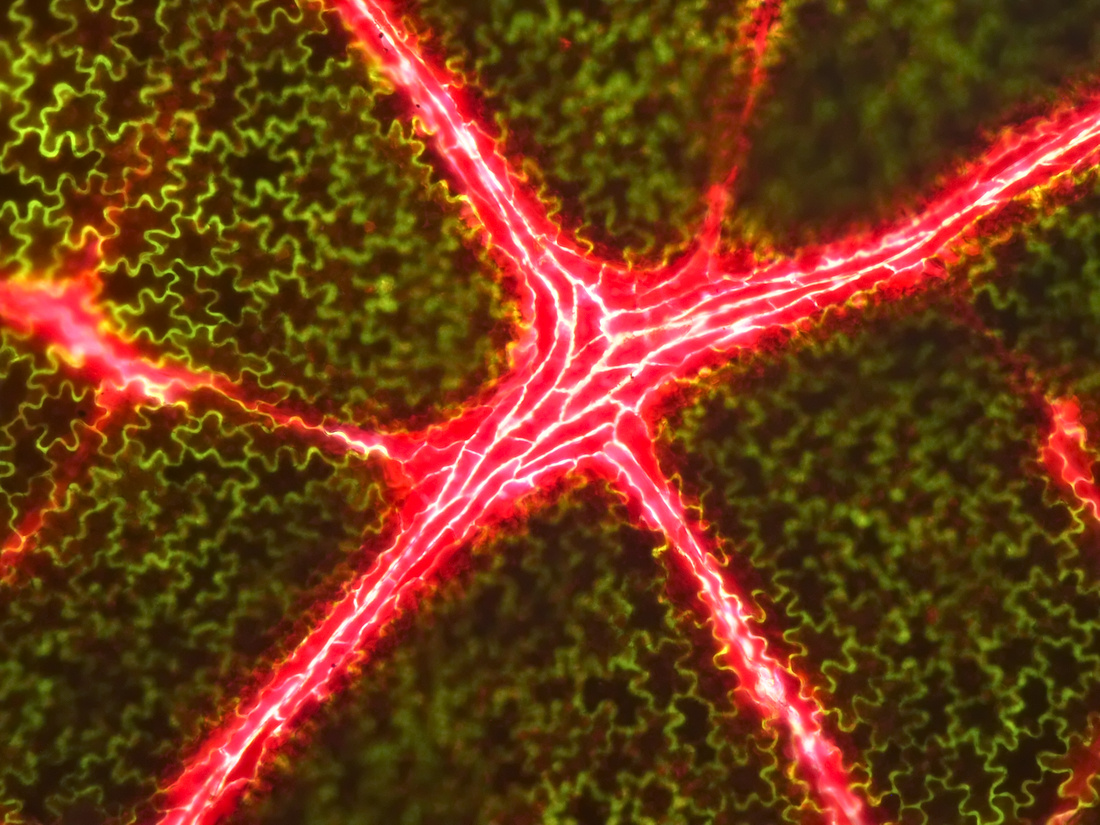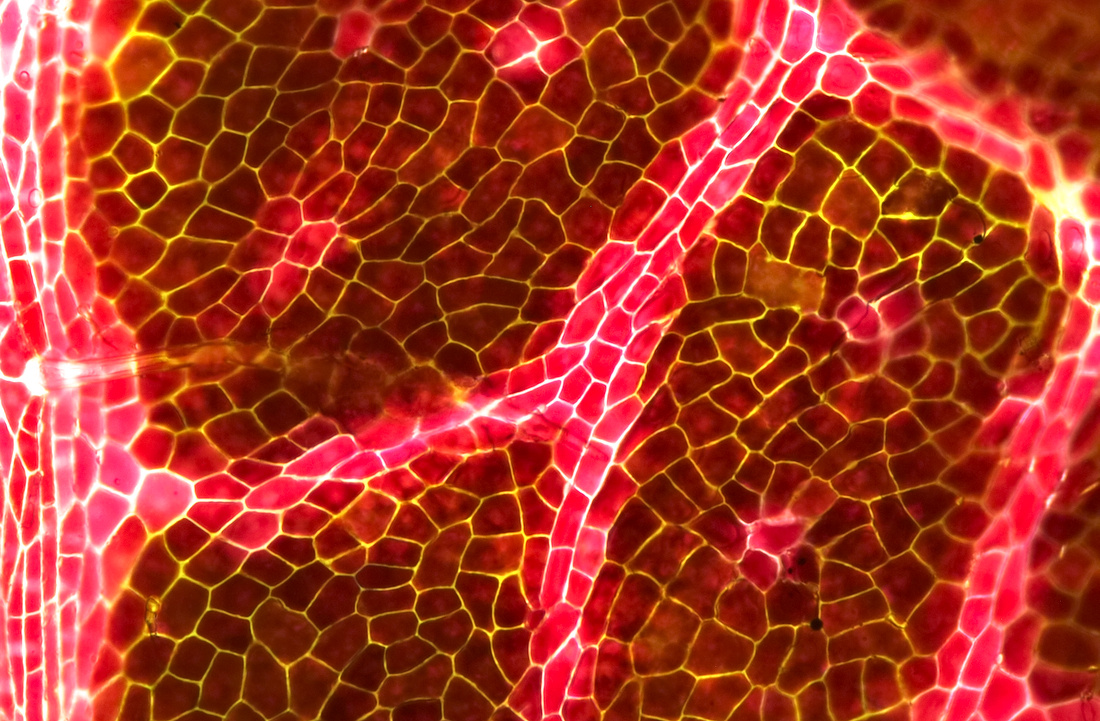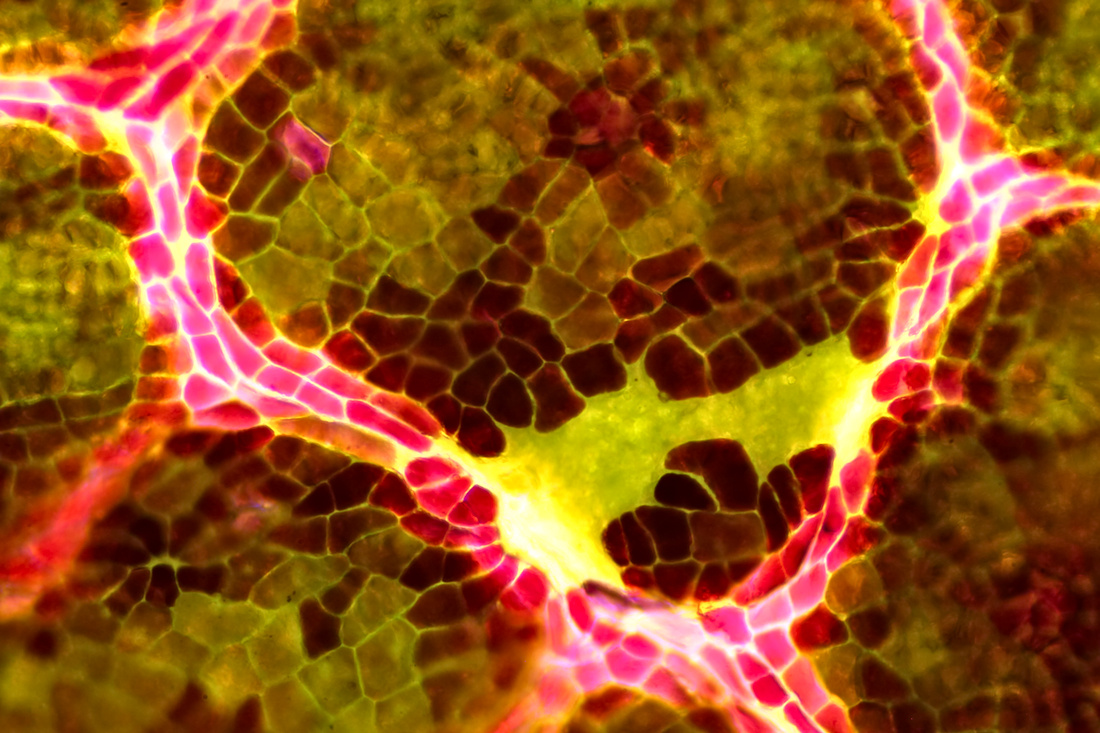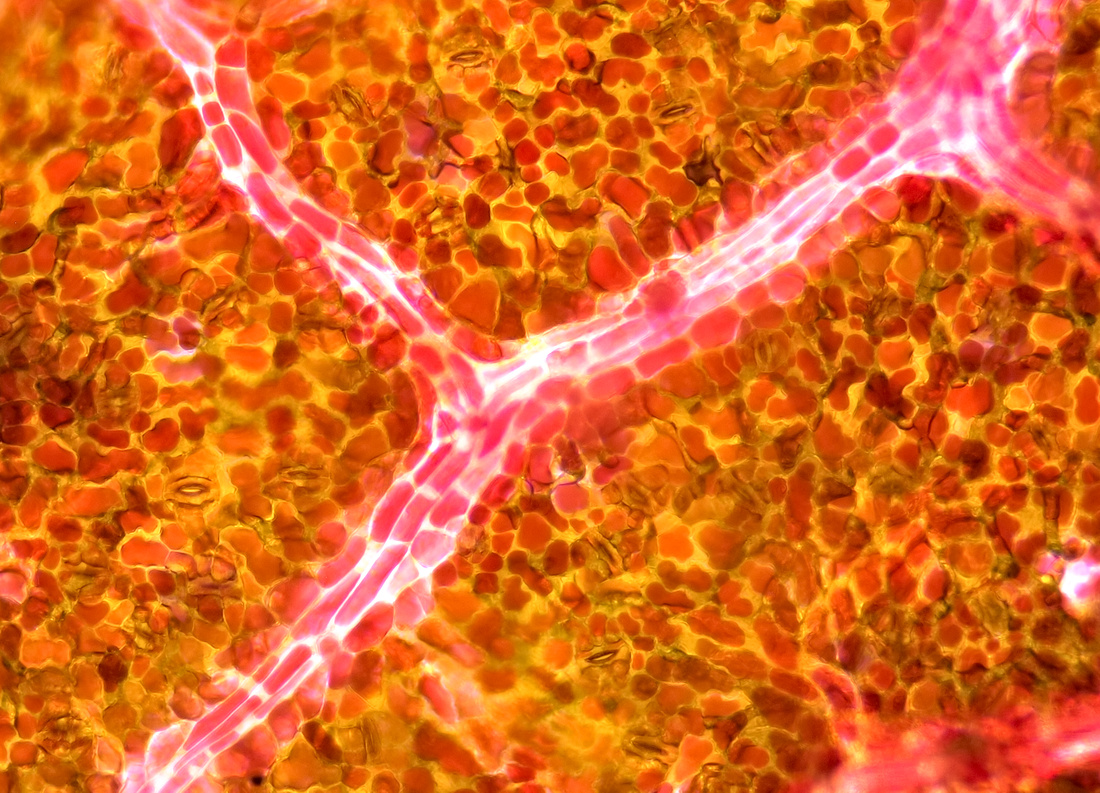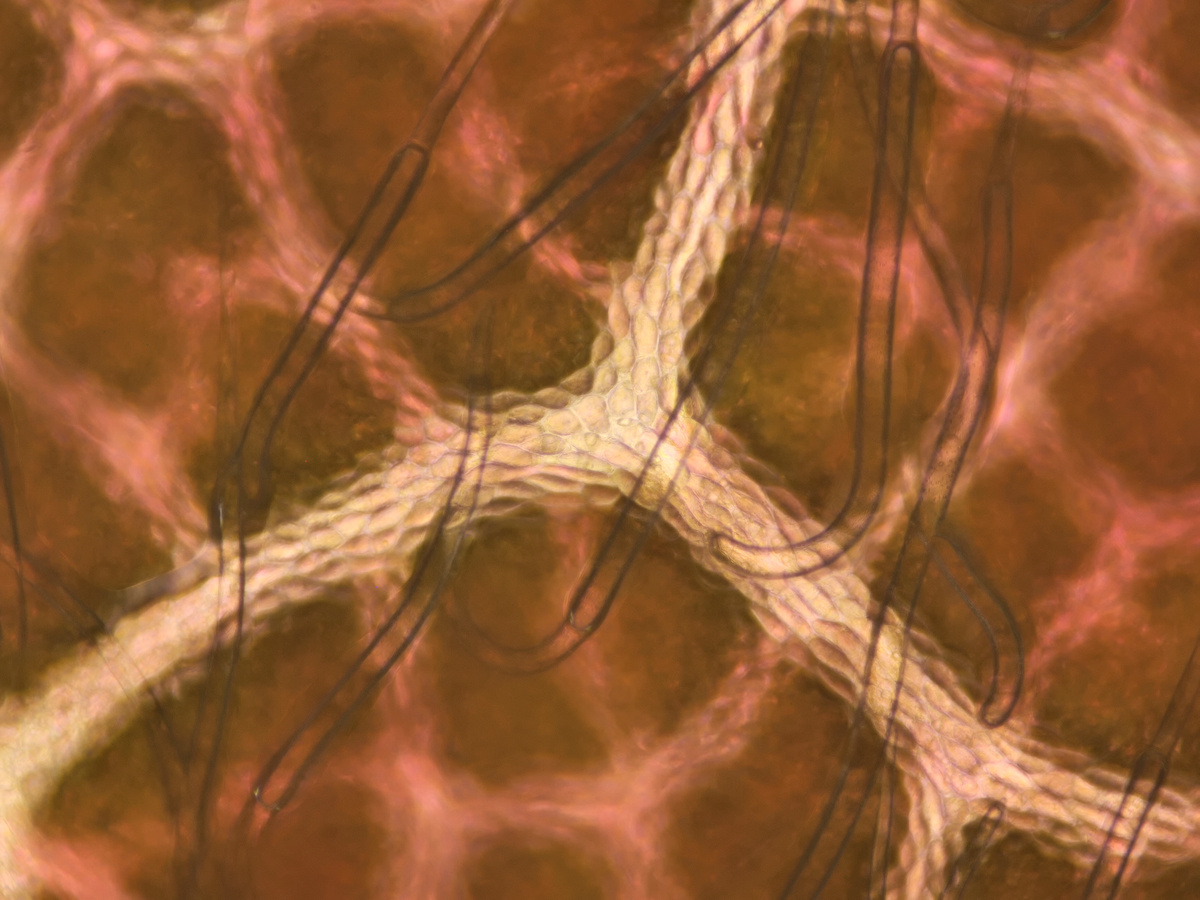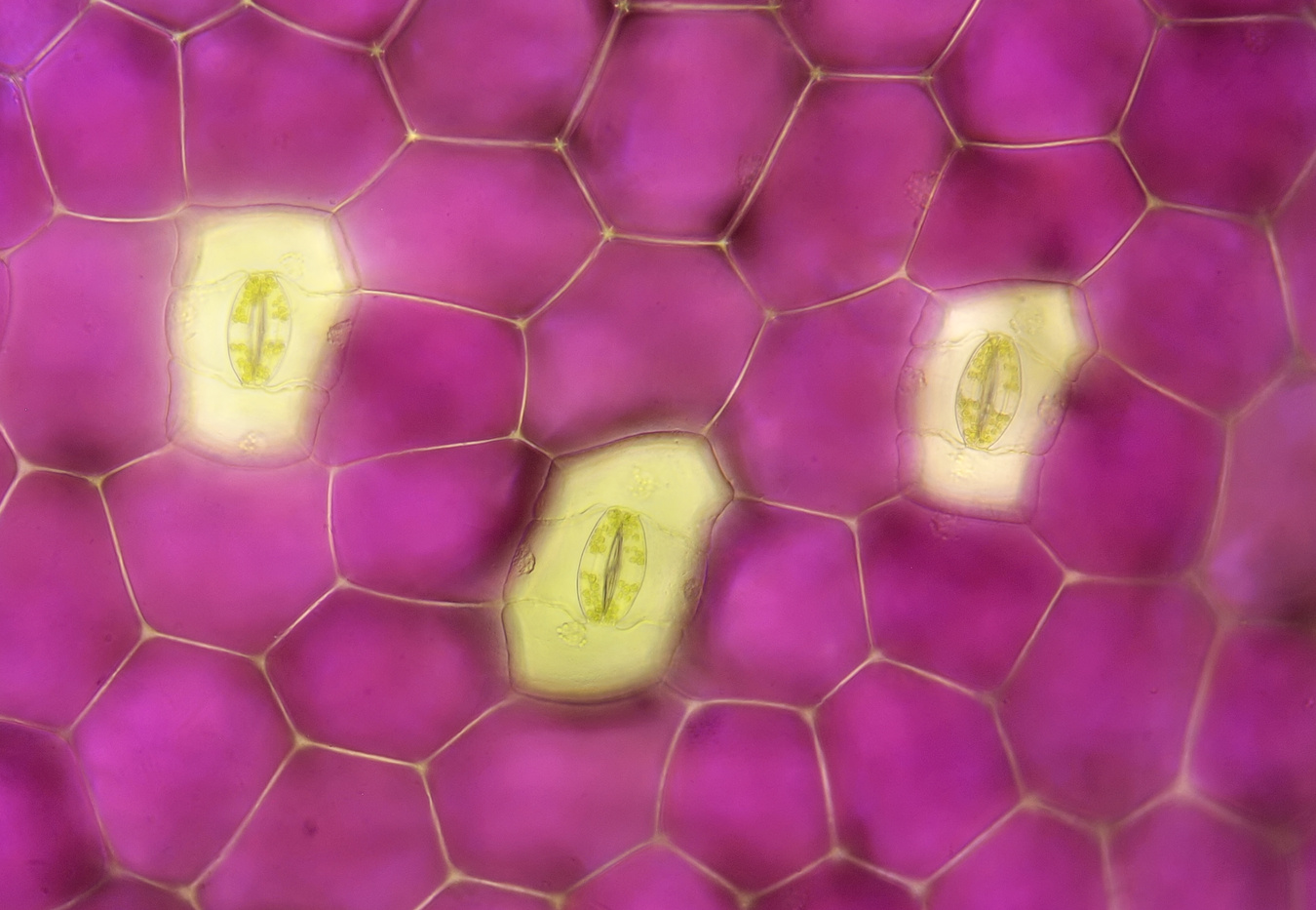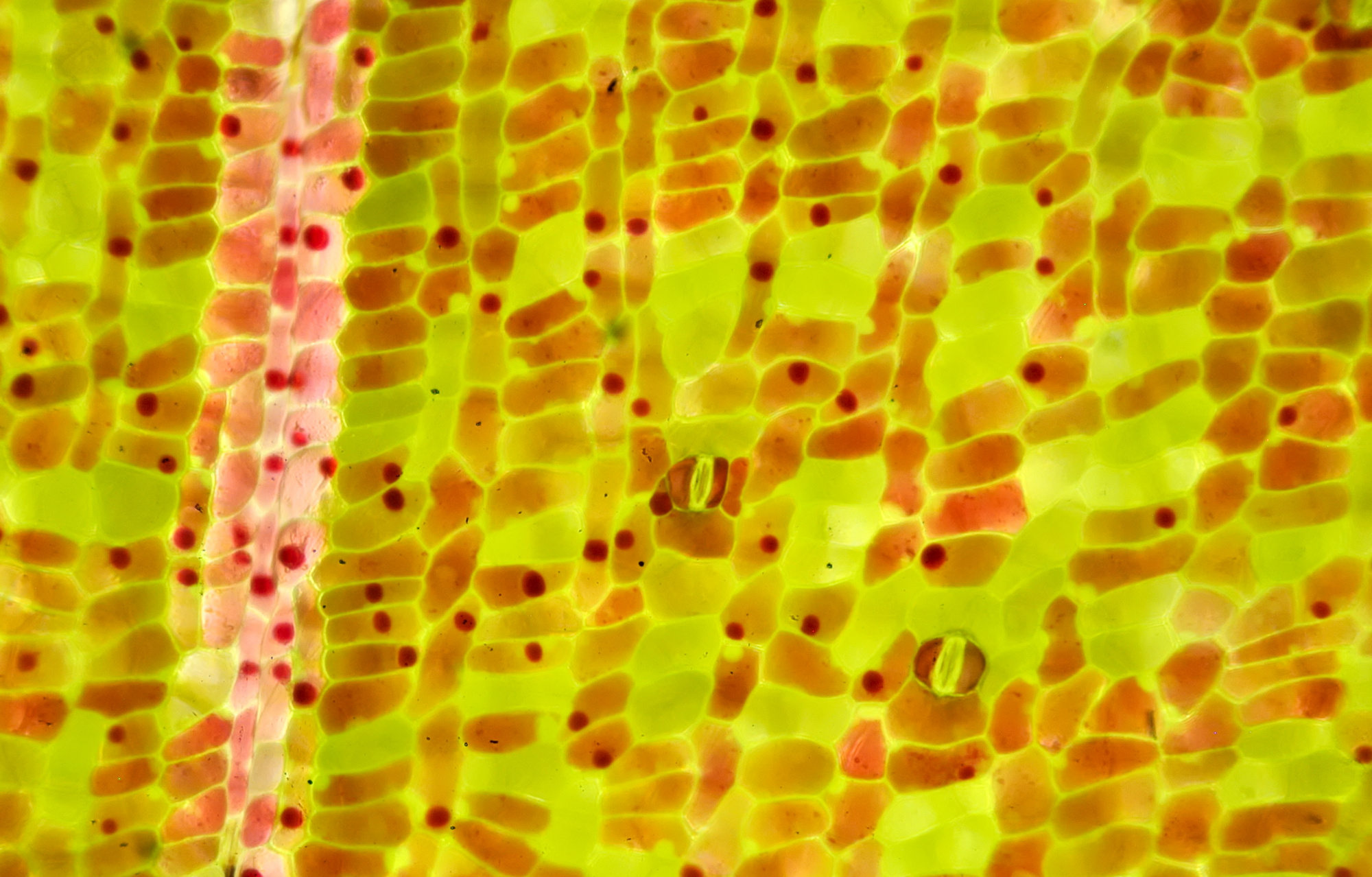
Introduction
To view the epidermis of a leaf with the microscope, a very thin membrane from the top or bottom is normally used. Such a membrane is then only 1 or 2 cell layers thick and thin enough to make a wet slide from it in the usual way. In this way, the cellular structure of the leaf surface and the details in the cells become clearly visible.
However, it is also possible to look through the entire thickness of a leaf. For this, a small piece is cut from a leaf and placed on a slide. The leaf can be viewed in this way without a cover glass with an objective that has sufficient working distance and where the absence of the cover glass has no influence. Objectives ≤ 10/0.30 are suitable. For leaves that are not too thick, it is even possible to use a 20/0.40 or 25/0.45 objective, but a cover glass must then be used. The piece of leaf is actually too thick to put a cover glass on, but if a lot of water is used, it is possible. The piece of leaf is immersed in water and the cover glass floats on it. The water also makes the leaf more translucent. If the leaf is then viewed through the microscope, the intense colours can surprise you. It is a completely different view than with a normal slide that is prepared in the usual way. But no less interesting for that, in fact, rather artistic.......
Upperside of a beech leaf (Fagus sylvatica), photographed with Carl Zeiss Jena Apochromat 16/0.40. Fiery red veins stand out against a background of epidermis cells that look a lot like puzzle pieces.
Upperside of the leaf of the red hazel (Corylus maxima 'Purpurea'), photographed with Carl Zeiss Jena Apochromat 16/0.40. This leaf is a true mosaic.
Upper side of the leaf of the red hazel (Corylus maxima 'Purpurea'), photographed with Carl Zeiss Plan 25/0.45.
Once again the leaf of the red hazel (Corylus maxima 'Purpurea'), this time the underside. If you look closely you can see stomata. Objective: Carl Zeiss Neofluar 10/0.30.
The underside of a leaf of maple (Acer), photographed with Winkel-Zeiss 13/0.32. Leaf hairs are visible in the foreground.
Leaf of Tradescantia zebrina. The leaves of this plant are quite thick but the stomata let a lot of light through. The specialized cells around the stomata are clearly visible. Objective: Carl Zeiss Neofluar 16/0.40.
The underside of a leaf of Canna. Objective: Olympus 10/0.25.
